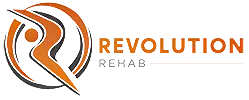Are you sitting at a desk all day, slouching on the couch, or constantly staring down at your phone? Many people overlook posture as a simple habit—but poor posture is often the hidden culprit behind nagging back pain. At Revolution Rehab in Grand Rapids, MI, we frequently encounter clients who have dismissed their posture habits—only to find themselves dealing with tension, stiffness, or sharp pain. This article explores how poor posture results in back pain, why it happens, and what you can do to stop it from getting worse.
Understanding How Poor Posture Results in Back Pain
To understand how posture affects pain, it’s helpful to look at the spine’s anatomy. Your spine is made up of vertebrae, intervertebral discs, ligaments, muscles, and nerves. Ideally, it maintains natural curves: inward at the neck (cervical), outward in the upper back (thoracic), and inward again in the lower back (lumbar).
When you maintain poor posture—like slouching forward or rounding your shoulders—the spine’s natural curvature shifts. This imbalance places extra strain on certain structures:
-
Increased stress on intervertebral discs, causing them to bulge or degenerate.
-
Overstretched ligaments and weakened muscles in the back and core, leading to fatigue and imbalance.
-
Compressed joints and nerve irritation, which can produce localized aches or radiating pain.
Over time, these changes can trigger chronic discomfort or acute back pain—and that’s how poor posture results in back pain.
Common Causes of Posture‑Related Back Pain
Below are the main elements that often accompany or worsen poor posture:
Injuries: Even a minor muscle strain or ligament sprain can lead to compensatory postural habits—like favoring one side or hunching forward—which perpetuate pain.
Medical conditions: Disorders such as osteoporosis, spinal stenosis, or degenerative disc disease are more symptomatic when posture is off.
Structural issues: Conditions like scoliosis or leg-length discrepancies cause uneven loading and habitual bad posture.
Lifestyle factors: Sedentary jobs, extended driving, poor ergonomic setups, and consistently looking down at devices all contribute.
Nerve‑related conditions: Chronic misalignment can lead to nerve impingement—such as sciatica—triggering sharp, burning pain that travels down the leg.
Diagnosis: Spotting Posture‑Induced Back Pain
At-home awareness and professional evaluation are both essential:
1. Self‑Assessment
You can start by observing your posture in a mirror or by snapping a photo from the side. Look for:
-
Slouched or rounded shoulders
-
Forward head position
-
Lack of natural lower back curve
Use the “wall test”: stand with your heels, buttocks, shoulders, and head against a wall. If more than a hand-width fits between your lower back and the wall, your posture is off.
2. Medical Evaluation
At Revolution Rehab, we assess posture using:
-
Spinal posture screening
-
Movement and gait analysis
-
Palpation to identify tense or weak muscle groups
We may collaborate with your doctor or physical therapist to recommend imaging or further tests if red flags are present.
3. Recognizing Red Flags
While poor posture typically causes muscular aches, certain signs warrant prompt medical attention:
-
Unexplained weight loss
-
Numbness or weakness in legs
-
Sudden onset of severe pain
If any of these occur, seek medical care immediately—Revolution Rehab can help coordinate those next steps.
Treatment Options for Posture‑Related Back Pain
Home Remedies
Start simple:
-
Apply heat packs or warm baths for tight muscles.
-
Use ice therapy to ease acute inflammation.
-
Perform daily gentle stretching—such as cat–cow movements and hamstring stretches—to loosen up.
Physical Therapy & Corrective Exercises
A physical therapist or rehabilitation specialist at Revolution Rehab will:
-
Design individualized exercise programs to strengthen your deep core and postural muscles.
-
Use manual therapy—massage, soft tissue release, joint mobilization—to restore mobility.
-
Teach movement retraining to improve posture during daily activities.
Ergonomic Adjustments
Optimizing workstation setup is essential:
-
Chair set so your feet lie flat, with knees at hip level.
-
Monitor at eye level, and keyboard/mouse within reach.
-
Regular microbreaks to stand, stretch, and reset posture.
Medical Interventions
In more chronic or severe cases, your care might include:
-
Prescription muscle relaxants
-
Referral for imaging (MRI or X-ray)
-
Consultation with a spine specialist
At Revolution Rehab, we work alongside medical providers to ensure integrated, conservative care.
Prevention Tips: Keeping Back Pain at Bay
Preventing posture-induced pain means habit change plus strengthening:
Strength & Mobility Exercises
-
Plank variations to build core stability
-
Bruegger’s posture: seated row with arms externally rotated to counteract forward-slouching posture
-
Thoracic extension drills to reverse hunching
-
Hip flexor and hamstring stretches to reduce lumbar strain
Lifestyle Enhancements
-
Maintain a balanced weight to lessen spinal load.
-
Stand scattered throughout the day—use a sit–stand desk or set alerts.
-
Be mindful of posture when using devices—bring them up to eye level.
Revolution Rehab offers group workshops and one-on-one coaching to reinforce these habits.
Call Us Today!
Poor posture might seem harmless—but left unaddressed, it can spiral into persistent, disruptive back pain. At Revolution Rehab in Grand Rapids, MI, our expert team specializes in diagnosing posture-related issues, pinpointing what triggers your discomfort, and developing personalized treatment plans. Whether it’s chronic stiffness or recurring pain, we’re here to help you stand tall again.
Book a consultation today at our Grand Rapids clinic. Reclaim your comfort, posture, and confidence—contact Revolution Rehab to schedule your posture assessment and begin your journey to lasting relief.


